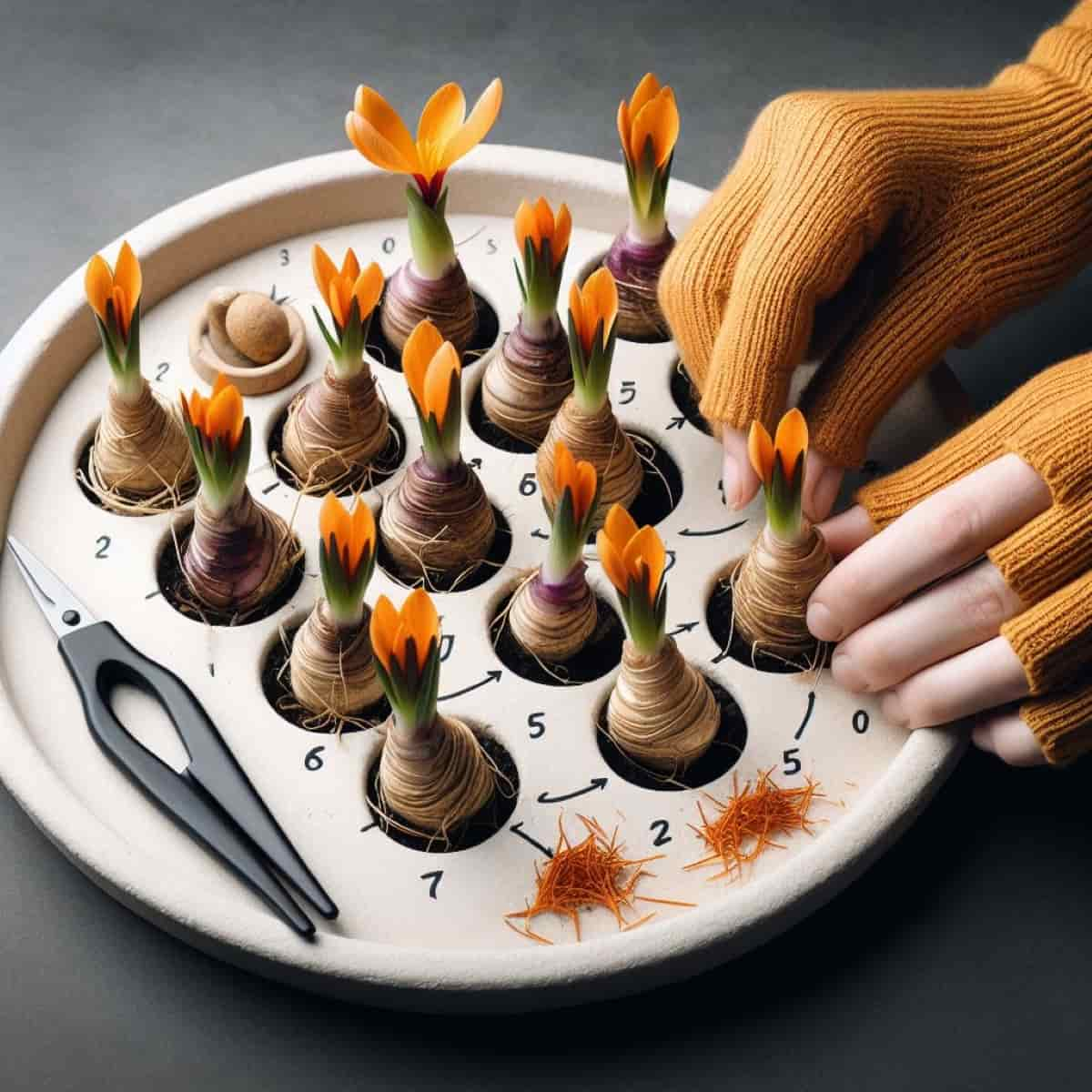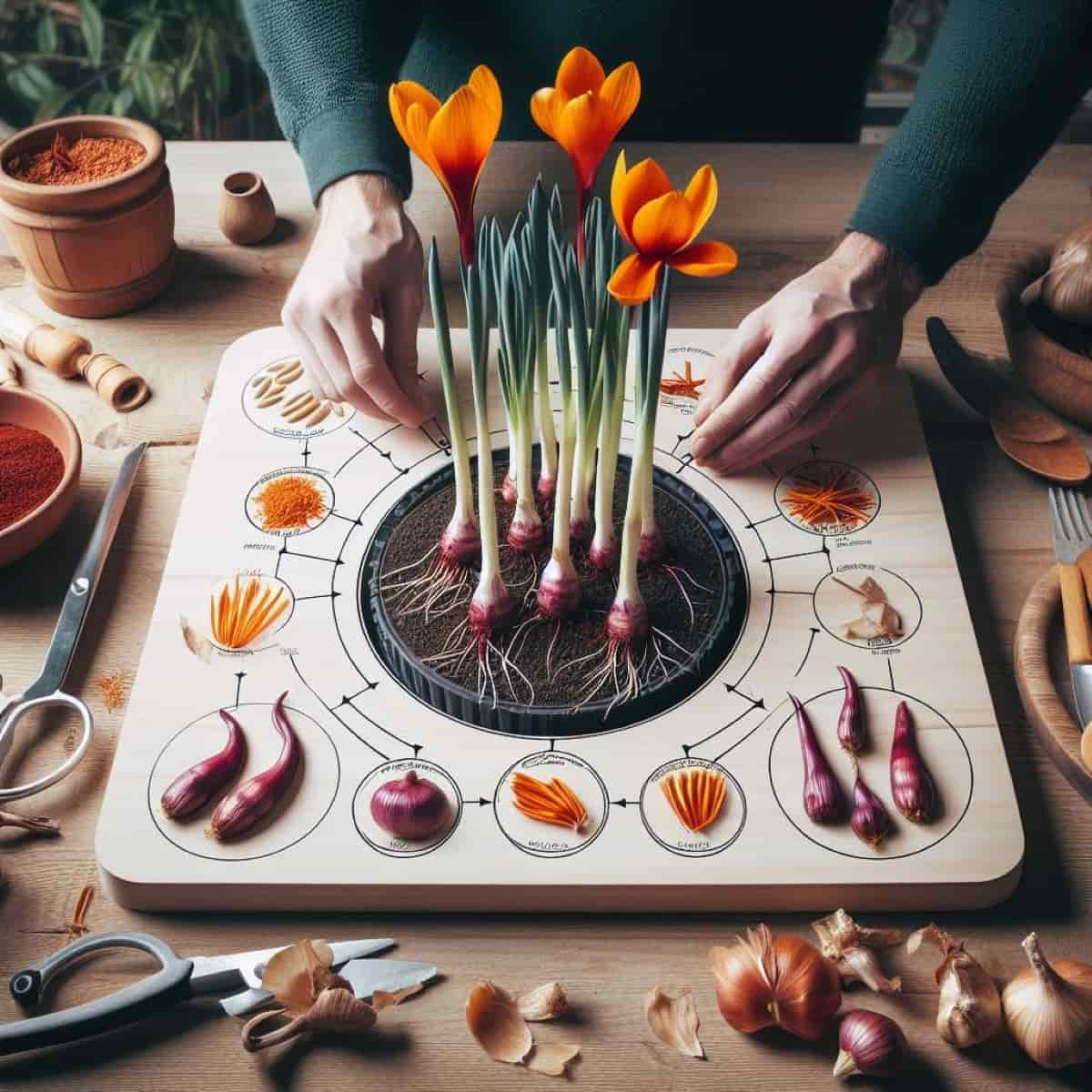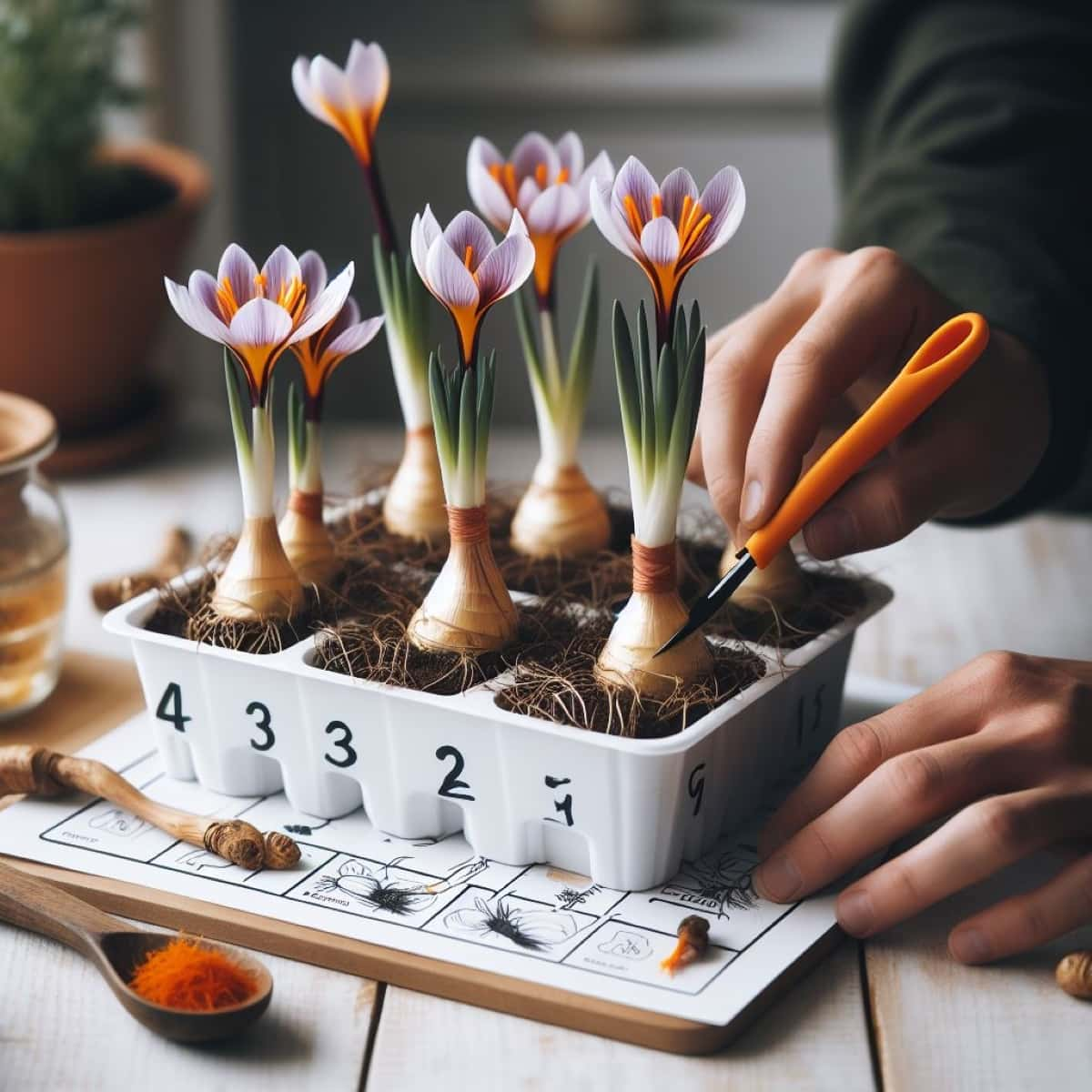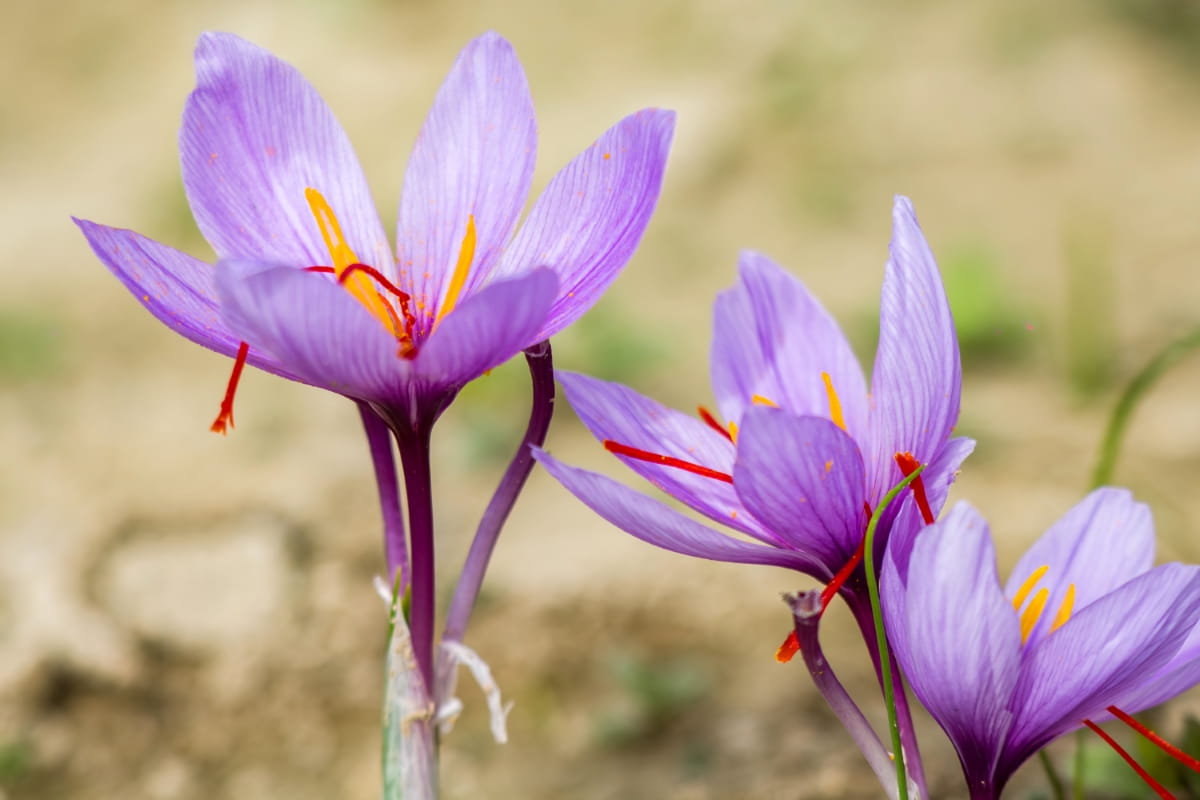This guide explores the art of indoor saffron farming, a delightful hobby and lucrative venture. It provides secrets to successful cultivation, the joy of nurturing crocus flowers, and the potential for excellent profits from your harvest. Discover the fascinating realm of indoor saffron cultivation and unlock the doors to exceptional yields and profits.

How to Grow Saffron Indoors
Select Quality Saffron Bulbs
Selecting quality saffron bulbs is crucial for a thriving harvest. Opt for plump, firm bulbs free from mold or soft spots. Look for deep red stigma tips, a sign of freshness. Healthy, well-sized bulbs ensure robust saffron production. Prioritize bulbs from reputable suppliers to guarantee purity and potency. Inspect the packaging for proper storage conditions. Choose bulbs with intact roots, as they indicate vitality. Quality saffron bulbs lay the foundation for a successful cultivation venture. Invest wisely for a bountiful saffron yield.
Prepare the Growing Medium
Choose a loose, well-aerated growing medium for optimal plant growth. Mix nutrient-rich soil with perlite or vermiculite for aeration. Ensure good drainage to prevent soggy roots. Use a pH-balanced medium to support nutrient absorption. Amend with organic matter for added fertility. Regularly check moisture levels and adjust watering accordingly. Consider coconut coir or peat moss for moisture retention. Customize the medium based on plant needs. Keep it disease-free by sterilizing it before use. Invest in quality soil for thriving plants. Experiment with different mediums to find what suits your plants best.
Plant Saffron Bulbs
Saffron bulbs, or Crocus sativus, thrive in well-drained soil and sunny spots. Plant bulbs in late summer, 4 inches deep and 4-6 inches apart. Ensure soil pH is 6.0-8.0 for optimal growth. Water the dirt in a way that keeps it moist but not soaked. Saffron flowers emerge in fall; harvest the vibrant red stigmas carefully. Each bulb yields a few precious strands, known as saffron threads, prized for their intense flavor and color. Saffron requires minimal care but rewards with a rich culinary and medicinal history. Perfect for gardeners seeking a unique and valuable addition to their harvest.
Provide Adequate Lighting
Proper lighting enhances safety, productivity, and mood. Adequate illumination reduces eyestrain, preventing accidents. Well-lit spaces promote focus, positivity, and a welcoming atmosphere. Choose fixtures that suit the room’s purpose, ensuring optimal brightness. Natural light is beneficial; utilize windows and skylights.
In case you missed it: Utilizing Technology in Modern Saffron Farming Practices

LED bulbs are energy-efficient and long-lasting. Position lights strategically for even coverage. Consider task lighting for specific activities—regularly clean fixtures for maximum brightness. Change how bright the lights are based on the day. Make a well-lit space a priority for your health and happiness.
Provide Required Water and Humidity
Maintaining optimal water and humidity levels is crucial for plant health. Water plants regularly, ensuring the soil stays consistently moist but not soggy. Use a potting mix that drains well to keep water from pooling. Humidity is vital for tropical plants; mist them or use a humidifier. Check specific plant requirements and adjust care accordingly. Balancing water and humidity promotes vibrant growth and prevents issues like dehydration or fungal problems. Keep an eye on your plants to see if they need more or less water. Consistency is key—find the right balance to foster a thriving, green oasis.
Make Sure to Have Temperature and Climate Control
To successfully grow saffron indoors, maintain a temperature of 60-75°F (15-24°C). Use a well-ventilated space with good air circulation. Humidity should be low, around 40-60%. Please give them a lot of sunlight or grow lights every day for 6 to 8 hours. Saffron thrives in well-draining soil, so ensure proper drainage. Keep the climate consistent to mimic saffron’s native Mediterranean conditions. Adequate temperature and climate control are vital for healthy saffron cultivation.
In case you missed it: Pest Management in Saffron Farming: Cultural, Biological, IPM, and Chemical Control

Fertilize Saffron Plants
To grow saffron indoors, use well-draining soil in a sunny spot. Every four to six weeks during the growing season (spring and fall), use a balanced fertilizer that dissolves in water. To get more flowers, choose a fertilizer that has more potassium in it. Something like 10:20 works well.
Too much nitrogen can stop flowers from forming, so stay away from it. Don’t water too much; let the dirt dry out between times. Saffron corms prefer a dormant period, so reduce watering in summer. Provide good ventilation to prevent fungal issues. Indoor temperature should mimic the plant’s natural habitat.
Harvest Saffron Threads
Growing saffron indoors allows you to enjoy the luxury of harvesting your vibrant saffron threads. Begin with well-draining soil and plant saffron corms in pots. Provide ample sunlight, as saffron loves sunlight. Maintain a warm environment, ideally between 75-80°F. Water sparingly to prevent corms from rotting. Expect blooms in the fall.
Harvest carefully when flowers display deep red stigma. Gently pluck the crimson threads with tweezers. Dry the threads in a cool, dark place. Your indoor saffron cultivation can yield a fragrant and prized spice, enhancing both your culinary adventures and indoor gardening experience.
Maintain and Replant Saffron Bulbs
To successfully grow saffron indoors, maintaining and replanting saffron bulbs is crucial. Use well-draining soil rich in organic matter. Place bulbs 3 inches deep, maintaining a spacing of 6 inches—water sparingly, keeping the soil consistently moist but not waterlogged. Provide ample sunlight, preferably 6-8 hours daily.
In case you missed it: Saffron Farming in Greenhouses: Benefits, Considerations, and Best Practices

After flowering, trim faded foliage to encourage bulb growth. Replant bulbs every 3-4 years to prevent overcrowding and enhance yield. Incorporate a balanced fertilizer during the growing season. Ensure proper ventilation to prevent fungal issues. Harvest saffron threads when flowers bloom—store bulbs in a cool, dry place during dormancy.
Conclusion
Indoor saffron farming involves selecting high-quality bulbs, using a well-aerated medium, planting in late summer, maintaining proper spacing, moisture, lighting, water and humidity control, and wise fertilization, all crucial for optimal conditions and fragrant yield.
- Feed Your Flock for Less: Top 10 Tips to Save on Chicken Feed
- Ultimate Guide to Ossabaw Island Hog: Breeding, Raising, Diet, and Care
- Hatching Answers: The Top 10 Reasons Your Chickens Aren’t Laying Eggs
- Eggs and Economics: Breaking Down the Cost of Raising Backyard Chickens
- Defend Your Greens: Proven Methods to Keep Iguanas Out of Your Garden
- Ultimate Guide to Cinnamon Queen Chicken: A Comprehensive Guide for Beginners
- Ultimate Guide to California Tan Chicken: Breeding, Raising, Diet, Egg-Production and Care
- Ultimate Guide to Marsh Daisy Chicken: Breeding, Raising, Diet, and Care
- 10 Types of Chicken Farming Businesses You Can Start for Profits